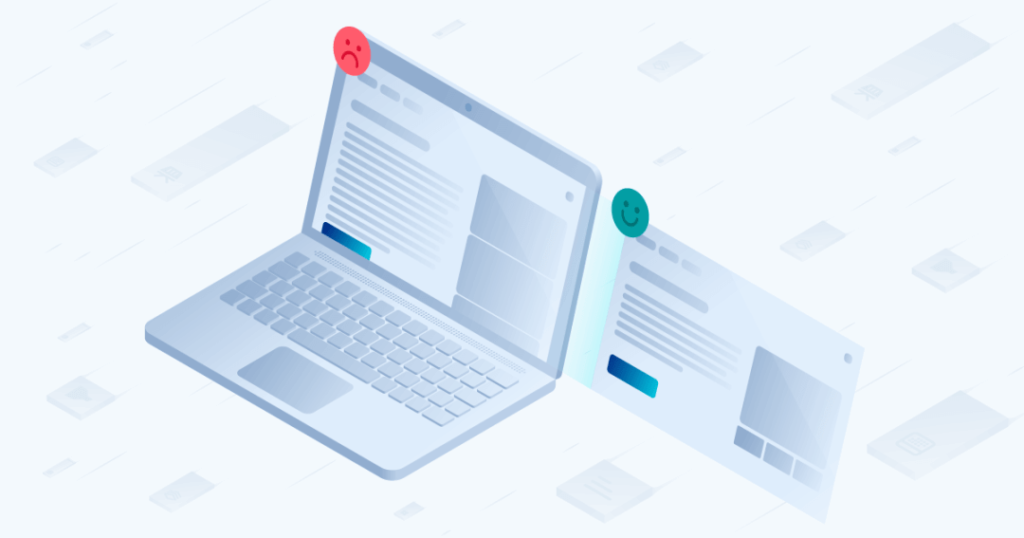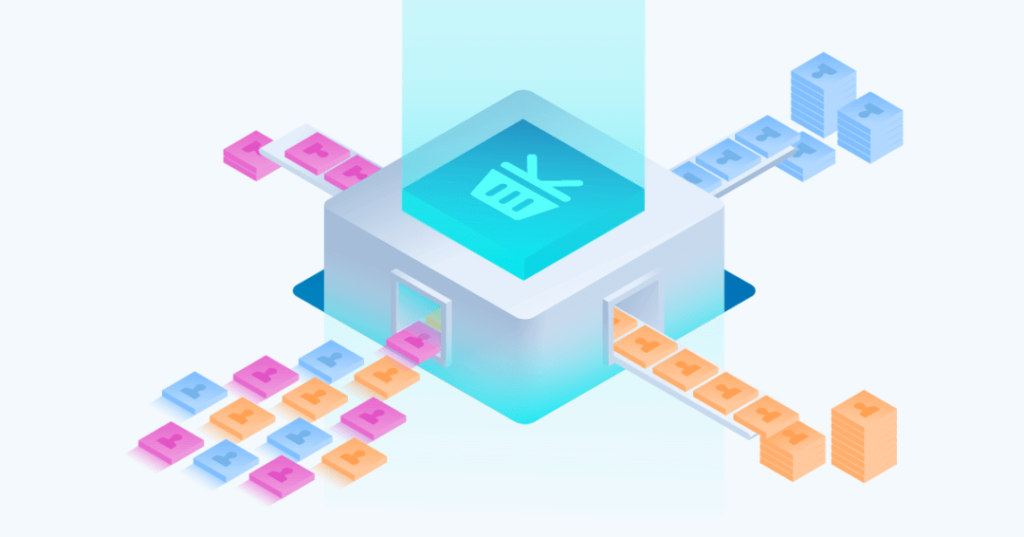A new year means a fresh approach to what’s coming up next in the following months. It’s crucial to be aware of the challenges and opportunities to make the most of your business strategy (or work on improving it). But let’s leave motivational tips and fortune-telling to others.
Our aim isn’t to make an elaborate forecast here. Instead, we’ve decided to do what we’re best at – gathering information and delivering it to you in an accessible form. And what’s more important for us than data analytics trends?
If you’re curious about the near future of analytics, get yourself a cup of coffee, sit comfortably, and let’s dive into the topic.
What is there to come in 2021?
There will be a lot going on in the online world, even if the post-pandemic reality will gradually start to bring back offline stores and events. The change has been made, and many businesses have experienced the benefits of digital possibilities. To mention just a few, they include reaching clients more precisely, collecting relevant data, analyzing it, and implementing constant improvements for a better customer experience.
Automation is bread and butter for most existing companies today. Lots of them (according to Deloitte’s research) have just started their digital journeys, but are already warming up to take their competitors’ market positions.
To be more specific, the upcoming analytics trends will focus on the following aspects:
Spotlight on online businesses
Many organizations have their businesses both in the offline and online worlds (if not entirely digital). However, if you’re still hesitant to take your walk-in store, event, or any other kind of work to a virtual space, now could be the last call to do so. “Flexibility” should be proclaimed as the word of the year – your business can only be adaptable to reality if you don’t put all your eggs in one basket. Digital seems the safest place for stable company development.
According to Forrester’s annual report, brands’ success will depend on their ability to harness disruptions and accommodate market demands. It’s no longer a “should I be a part of the online World,” but “how do I make the most of my website to surpass others.”
Being present in the digital world became mainstream some time ago, and today it’s even more crucial. So besides your company having an online profile, you should focus on highlighting your brand amongst others in the digital space.
The increasing importance of customer experience
Customer experience takes the top two places on the Forbes list for 2021. Conclusion? A focus on delivering the best service will be stronger than ever. With more knowledge and information available at their fingertips, customers are getting more aware of their needs. They are learning how to search for content about products and compare what they find. With more purchases being made online, it’s in perpetual motion.
What if you don’t deliver a high-quality customer experience to your clients? The numbers speak for themselves – the same source found that up to 96.2% of consumers would leave because of atrocious customer service. You can take advantage of this and stand out from your competitors with a first-rate helpdesk.
Focusing on the user experience & automation

Alongside the demand for top-notch customer service is the need to optimize and leverage the user experience. This research shows the most highly anticipated trends in the UX world. Improvements in this area will concern various industries such as medicine, education, self-care, gastronomy, and more.
Creative microcopy and app design based on user behavior are going to rock the IT industry. The aim is to give clients a product that’s exciting, drives innovation, and provides immersive experiences. UX optimized websites and applications should actually empower consumers to use digital tools more effectively and eagerly.
If you introduce a client to your website, you have to make sure that everything works seamlessly. However, you may often only see bugs and problems with the UX of your website after some time – when you bump into one or if an angry customer sends you a complaint.
In the coming year, more companies will invest in automation tools to work on their UX robustly. That’s also one of the biggest analytics trends, as some software systems that provide user-tracking solutions can help UX designers as well. They can interpret the data, adjust the layout to users’ actions, and create the most effective website design to boost conversions and nip customers’ pain points in the bud.
Google Analytics 4
Last but not least – the long-awaited Google Analytics upgrade that has been on everyone’s lips. We would rank it as the number one data analytics trend, as it introduces new, expanded options for users. It’s no longer a beta version, but some changes might be implemented in the next weeks or maybe months.
It’s a broad topic, but here’s what changes the new version will bring in a nutshell:
Integrated app and web analytics to combine data for unified reporting and analysis. Thanks to that, you can see joint metrics by default. The panel will resemble Google Analytics for Firebase.
- Provides an event-based model instead of sessions and introduces enhanced event measurement.
- You can export data freely to Google Big Query.
- Analysis option – you can export data and use features like funnel or path analysis and segment overlap for free, without a Google 360 account.
What are the expected results? It aims to provide a higher tracking standard that’s unified in one default dashboard (no matter if your client comes from mobile or desktop). User engagement analysis and shopping path optimization should be smoother and handier with the new version. Basically, you will be able to better understand the customer journey, but…
Google Analytics 4 will remain a quantitative tool that can gather and show useful data. To make the most of it, you can integrate it with qualitative software to see how your audience behaves.
Challenges your analytics tool has to face
Imagine how many tons of data your analytics tool has to manage every minute. Stop for a minute and think how challenging it is to process all that information lightning-fast. And isn’t it overwhelming to know that your work is never ending, as with more online users the amount of data increases enormously each day?
All that could be problematic for some software systems. Tools, as well as businesses, need to have a strong core in order to handle every task smoothly.
Here are the data analysis challenges that tools have (and will have) to face.
Data oversupply

With the shift to digital, the amounts of online data are rising. This refers to companies, as well as to customers. More people than ever are doing even grocery shopping online – by the end of 2020, traffic in the supermarket segment increased by 34.8% compared to the beginning of that year. The virtual marketplace is projected to increase its revenue by 29% in 2021.
This is just the tip of the iceberg, but it shows how much more data needs to be processed as the number of online shoppers, website users, and ecommerce companies rises. Keeping in mind that your analytics tool has to process that without slowing down your website (as speed is essential from an SEO perspective) illustrates the challenge.
Cherry-picking to find precious data
Big data seems to be a buzzword these days, but it’s not surprising. This age is all about numbers, documentation, and most importantly information. These aspects have started to have great value for business. Analytics software systems are there to gather each piece of information, save it, and compile it with the others.
What’s tricky about data analytics is picking the right metrics to follow and compare. It’s easy to get drawn into a sea of numbers or set your tool inappropriately. If digits blend in your eyes, maybe you should think about data visualization like graphs or funnels.
Data protection
Although, as a personal user, you might not read all terms & conditions, as soon as your brand enters the digital world, you will start to focus on the data. You need to be especially careful if you work in a high trust sector such as banking or medicine, or you handle clients’ money and personal information.
Data gathering and storage are regulated by rules that depend on a particular country’s laws. If you’re using analytics software, you need to double-check whether user-tracking parameters are set according to the regulations.
Ease of cooperation
Software systems today are so advanced that it’s hard to imagine a platform without integrations. Exporting data to other applications and sharing them within your team (or even externally) are critical for an omnichannel solution.
Spotlight on effectiveness
It’s never enough to stress this, so let’s say it one more time – the goal of the tool you’re using is to work effectively for you. That means collecting data that are relevant for you. To make it come to life, customization parameters can be helpful with tailoring features to your needs.
What Smartlook solutions can help your analytics this year?
After showing you all these data analytics challenges and trends, your head might be full of questions. Maybe we can clarify what exactly you can start doing from now on? We’re crazy about optimizing, comparing numbers, improving UX, and interpreting user behavior. An analytics tool is like a whole new world that opens doors for you and shows you paths off the beaten track.
Regarding your website analytics in 2021, there are six ready-to-implement solutions you might find helpful.
Watch only what matters
Don’t waste your time comparing irrelevant data. Create events for particular user types and filter information. You can set your own goals and exclude some types of clients to make your research more effective.
Plus, to go one step further, you can optimize your website and make it work more efficiently by fixing bugs and anomalies detected during recorded sessions.
Prevent bugs with robust analytics
Not so long ago, user experience seemed like an unnecessary fantasy for businesses. Today, we know that a well-designed user interface could raise a website’s conversion rate by a whopping 200%, and it can help you boost customer retention too. It might sound like a fairytale, but think about how many times you’ve abandoned a website yourself due to a poor user experience.
What’s more, it can also make your users stay longer with you. 67% of customers cite unpleasant experiences as a motivation for churn, so a smoothly running website might be a solution to reduce it.
Software systems like Smartlook have your back when it comes to optimizing your page. No matter if you work with UX designers in-house or externally, you can identify problematic places based on user recordings and heatmaps. Even if you work remotely, it’s easy to show on a session recording where something went wrong. All you need to do is to add a short note with a timestamp and share the link.
You can also automatically skip periods with no activity and jump right to the pain points, which can save you hours.
Be as fast as possible
If you’re worried about the speed of your website, you’re right to be – it’s a decisive factor that influences your SEO ranking. Using some data analytics systems might slow down your page or mobile app. You might ask “what is the point of optimizing the website (or app) and user tracking, then?”
The answer is simple – data analytics has great value if you use software that gives you both high speed and extensive information analysis. How does it work? The Smartlook script loads asynchronously, which simply means that it doesn’t prevent the rest of your website from loading while it downloads the data.
Understand your audience
Behavioral analytics aims to observe users’ actions, interpret them, analyze, compare with others, and draw conclusions based on relevant information. No guessing, no tarot card reading – just concrete facts based on real-life issues, specifically related to your business.
If you use Google or Facebook ads, you can analyze their behavior and check which channel drives more customers to your website with unique UTM tag filters. And to understand your clients even better, you can connect our API to your database of registered customers. That’s how you can find a session recording that shows a customer’s ticket problem.
Integrate data analytics software with your toolbox
To face data analytics challenges, your tool should have at least a few integration possibilities. For better workflow, it’s handy to send charts, graphs, and other events via Slack so that every employee will have access to it immediately.
And to make the most of your user-tracking, unification with Google Analytics is practically a must. Thanks to that, you can use both quantitative and qualitative platforms to get a bigger picture of your target audience.
Designed to protect data
It seems like every website wants our data nowadays, and that’s why we want to be sure that our private information is safe. In business, it’s even more critical to protect customers’ data in order not to break the law unintentionally.
For example, if you record customers in European countries, you can collect information as long as you provide what is required by the General Data Protection Regulation. You should be able to determine whether your tool is compliant with GDPR on its website (Smartlook has prepared basic info and a practical how-to article about it so that nothing surprises your business actions).
You don’t have to believe us, but what people say about us
We would love to show you how each option can be used for your business, but such content would probably fill a whole book. Instead of showing more features (which you can read about in the dedicated tab), we’ve gathered feedback from customers who already use our solution.
Each link takes you to a specific opinion so you can check out the full statement.
Efficient work for support teams
A data analytics tool might not be the first software type that pops into your mind when thinking about customer service. Nevertheless, according to our users, it comes in handy for support teams’ internal collaboration, as well as working with their clients.
Smartlook has given time management a new definition. Agents and customers alike have come to rely heavily on Smartlook to help get the support they need […] in a timely manner. It makes a world of difference when you can see the screen, identify the issue and solve it all at once rather than take precious minutes and hours trying to describe what is going on and another hour trying to describe how to fix it.
source: Capterra
What do marketers say about analytics with Smartlook?
It’s no secret that marketers are focused on campaign optimization and tracking their results. With Smartlook they can do that, and a lot more with funnel recordings and breakdowns by event properties.
Smartlook makes it very easy for our marketing team to understand users’ upgrade paths coming from different sources and different entry points. It is also super useful when our Dev team needs to debug whenever there’s any strange behavior, given that we can see the user’s console and API calls that may have failed.
source: G2
Analytics for UX designers and website developers
User Experience experts highlight the array of features that help with following users’ actions and quick troubleshooting.
It’s a must-have tool for any UX-related person, both designers, and marketers. It allows you to see what exactly your visitors do on your website. Smartlook has an amazing interface and powerful feature to analyze your customers’ behavior and improve your business.
source: Capterra
Easy to set up
The beginnings tend to be hard – new interface, features, and settings. It could be more comfortable for those who have already had some experience with analytics tools, but it’s not always the rule. Our support team is all set and ready to run an onboarding session and help you.
The Smartlook interface is easy to get started with. Using Google Tag Manager, I was able to be up and running within minutes and already collecting usable data. […] Identify specific events you want to keep track and Smartlook will rank those events and allow you to drill down further as needed.
source: G2
For further research
You can find out more reviews on services such as Capterra and G2 (both with an average 4.7/5 overall rating). There are over 738 opinions, so you can carry out comprehensive research to examine the usability of our data analytics software.
How about your analytics in 2021?
That was a long list of data analytics trends and challenges. Hopefully, you’ve managed to reach this point, and you’re already thinking about improving your online business in the upcoming months.
These key takeaways might come in handy whenever you want to recall any information provided in this article:
- Companies will have to highlight their online presence and leverage the customer experience.
- More businesses will focus on user experience and analytics.
- Google Analytics 4 will change quantitative data analytics.
- The need for automation tools will increase. Thus, software systems will have to face challenges like increasing data storage, data safety protection, keeping a website running at high speed, plus easy and seamless information sharing.
- When picking your data analytics platform, you should double-check aspects like the possibility of integrations with your toolbox, an intuitive interface for teamwork, customizable features, personalized filters, impact on your SEO (e.g. influence on the website speed), data safety (e.g. GDPR).
Now it’s up to you! Think about your goals and ways to achieve them, and remember that you’re not alone in the game. Software systems like Smartlook can give you a helping hand during your analytics journey.










